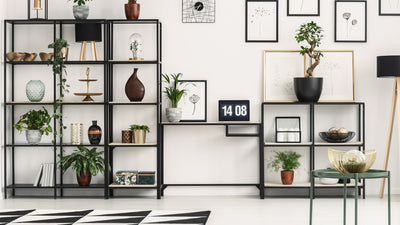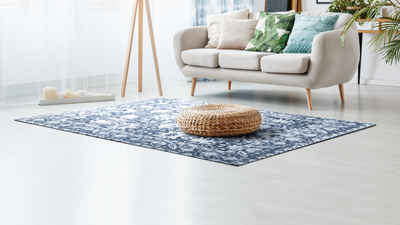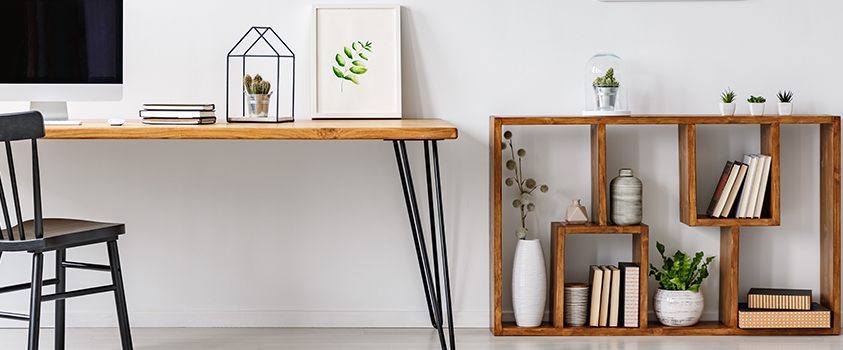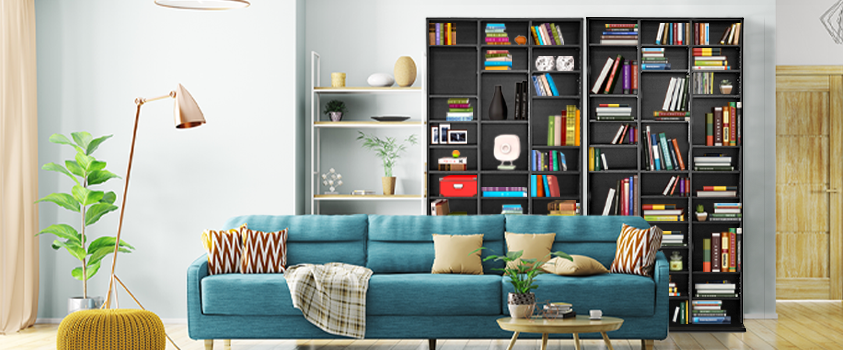How to Choose the Perfect Bookshelves for Your Collection
Whether you struggle to provide a sense of order to your personal library, or your book collection has started to spill out, you may need to invest in a bookcase.
A staple for every home, the bookcase is often a room's focal point. One of the most useful pieces of furniture available to purchase, they not only serve to store books but also souvenirs, curios, art and other sentimental items. Your bookcase is a reflection of the best of you, on display for the world to see, so you need a bookcase that suits all your needs.
What is your budget?
One of the first things to consider when buying furniture is your budget. A higher budget means you have more freedom in terms of size and substance, but that doesn’t mean you can’t find an affordable, long-lasting and durable bookshelf on a budget.
If your shelves are only going to hold lighter knick-knacks, books or magazines, a more affordable bookshelf may be the right choice for you. If you expect your bookshelf to work harder to hold your vast collection, or if your pieces are particularly valuable, you may want to invest in a hardier, more expensive unit.
How much space do you have?
Most of us have space restrictions of one sort or another when it comes to styling a bookshelf, whether that’s short ceilings, narrow walkways or odd-shaped layouts. Luckily, bookshelves have the most variety in materials, shapes and sizes compared to other essential furniture pieces, since they are bought to fill specific needs and spaces. Need pointers or ideas? Read on to find out more about height, width and depth considerations whether you're styling your bookshelf in the bedroom, dining room or living room.
Height and width
Tall bookcases tower over a room and look very grand, but you may want to put functionality first. Think about what height you want your favourite objects to be, and whether you can envision yourself pulling out a ladder every time you need to clean. Shorter bookshelves will leave you with some wall space and have the added advantage of usable surface area on top, but you may have to bend down more often. The width will give you a more usable surface area to display, but depending on the weight of the items you may want a bookcase with a wider base for stability.
Depth
The average bookshelf depth is 10-12 inches, giving ample space for storage. Some bookshelves, such as ladder shelves or CD/DVD shelves, will have less room. You can often adjust for height, but rarely depth, so you may want to check the length of your belongings before purchase, especially if you are buying a bookshelf with doors.
Types of bookshelves
Standard bookshelves
The most common style, this traditional style bookshelf is made of multiple compartments and has a closed back. A great all-around choice for most homes, as they fit most decor styles and come in a wide range of styles and finishes for any budget.
Ladders or leaning bookshelves

Ladder or leaning bookshelves start with a wide base and end with a narrow top. They are a nice artistic addition to the home and take up very little space, perfect for displaying smaller collections.
Corner bookshelves
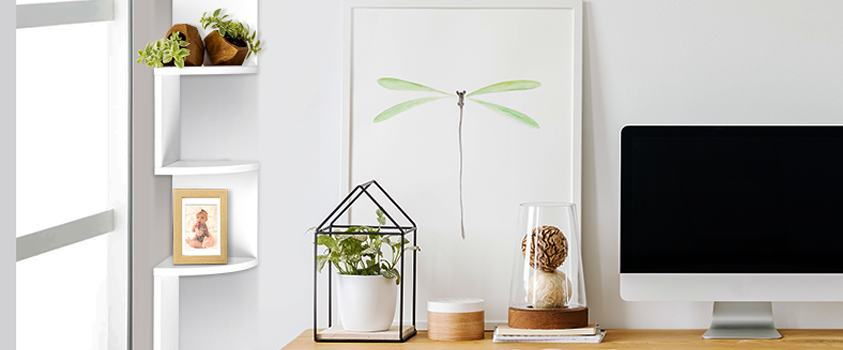
Corner bookshelves are designed specifically for cornerscorner bookshelves are designed to display objects at an angle. They may be open, backed, with or without doors, leaning or standard style. They may be a small set of shelves or full bookcases that meet in a V shape. Great for small, awkward spaces.
Cube shelves
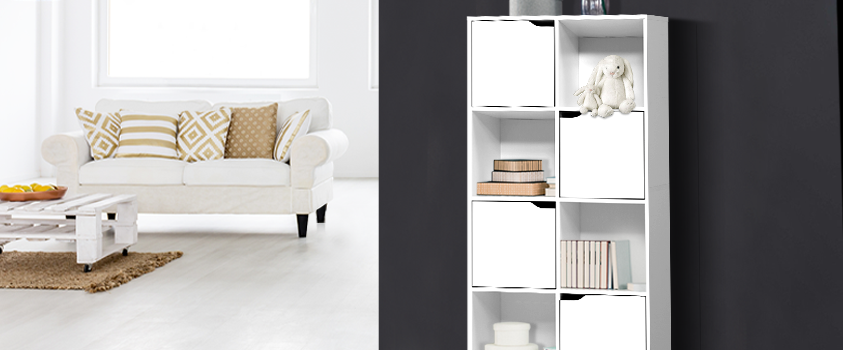
An incredibly popular style, cube bookcases comprise evenly spaced, standard-sized ‘cube’ shelving, which is often modified with various fabric, plastic or wood inserts. These are great for children’s rooms, home offices, and anywhere you need extra flexible, functional shelves.
Modular shelves

Modular bookshelves come in separate units that can be combined into whatever bookcase fits your current needs. It’s a cost-effective shelving style that lets you experiment with the perfect build, and can be added to at a moment’s notice for additional storage. These are a great option for buyers who want a large, quality unit, but don’t necessarily have the budget just yet.
Barrister bookcases
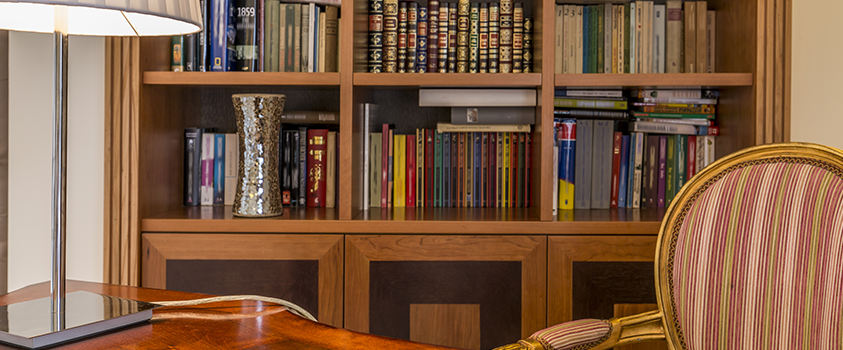
A barrister bookcase combines the elegance of an old-fashioned modular bookcase and the storage of a cabinet or credenza. Originally intended to hold heavy law tomes for, you guessed it, barristers, these bookcases are best bought vintage and often feature spacious shelving, an ornate wood frame and glass doors.
Geometric bookshelves
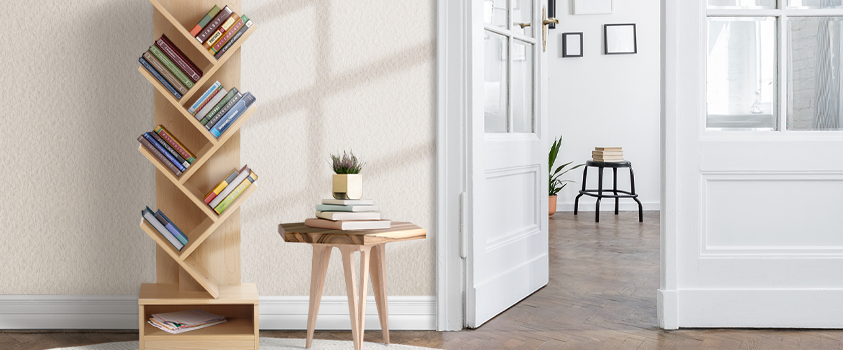
These bookshelves offer an alternative shape to the standard boxy compartments of a traditional bookshelf. These come in various styles, often featuring asymmetrical shelves, odd angles, and freeform shapes.
Floating shelves
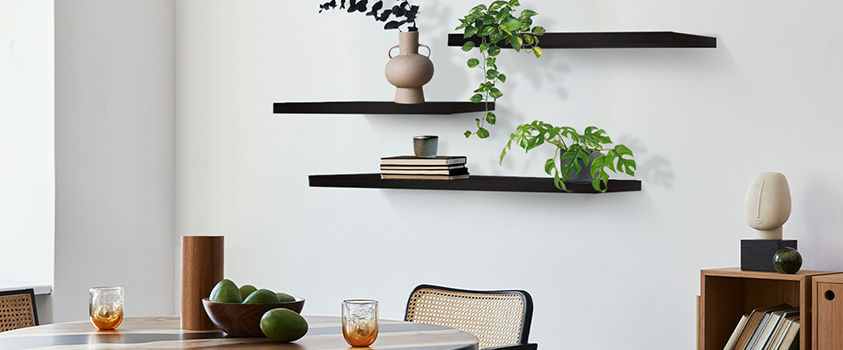
Floating shelves are useful for everything! These shelves are attached to the wall with almost invisible mounting and give the illusion of free-floating storage. You may want to avoid this type of shelf if your objects are particularly large or heavy, but these are otherwise great space savers!
Freestanding shelves
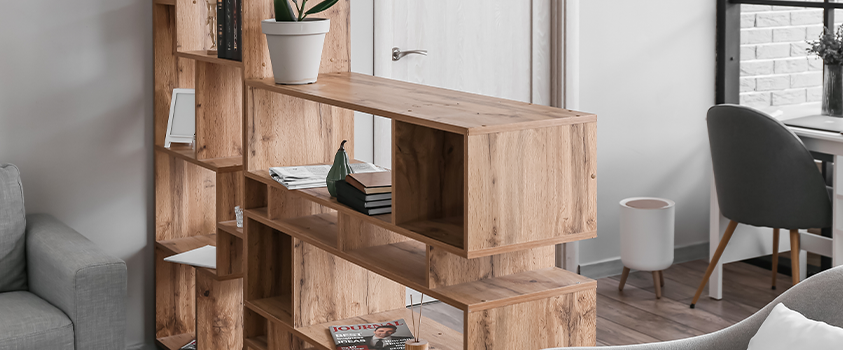
Most bookshelves require some form of mounting to the wall, usually to avoid tipping. Freestanding shelves are designed to stand away from a wall and are perfect for use as room dividers, or just to avoid putting holes in your plaster. When choosing a freestanding shelf, you’ll need to be very aware of its weight capacity, and stack your collection accordingly: larger and heavier objects on the bottom and pushed to the back, lighter objects on top.
Materials
Wood

The natural look of wood is deeply appealing to many bookworms. It fits most interior styles thanks to the wide range of wood types and styles available. For industrial, mid-century modern and classic design, you might like the bold look of dark wood such as ebony, walnut or mahogany, while a more laid-back design style like Scandi or coastal may suit light woods such as aspen, beech, or ash. Wooden bookcases and bookshelves are durable and will last for many years with the right maintenance. They are also easier to restore to pristine condition if purchased second-hand. However, quality solid wood products will quickly drain your budget, especially if they are customised.
Pros:
-
Easy to match with existing decor.
-
Durable and long-lasting.
-
Readily available new or old.
-
Can be restored.
-
Wide range of colours depending on wood type.
Cons:
-
Expensive.
-
Absorbs odours and stains.
-
Fades in direct sunlight.
Particleboard

Particleboard is made from wood waste products, such as wood chips, sawdust and shavings. The main benefit of particle board is that it is a cheap alternative to solid wood, but there are plenty of other positives such as its lightweight nature, minimal need for maintenance and flat surface. However, the material is not as dense as solid wood, so it cannot support heavy loads and is generally not as long-lasting.
Pros:
-
Affordable alternative to wood, without sacrificing the look.
-
Wide variety of styles and uses.
-
Lightweight.
-
Easy to maintain.
Cons:
-
Cannot support heavy-weight items.
-
Not long-lasting.
-
Quality varies.
Metal
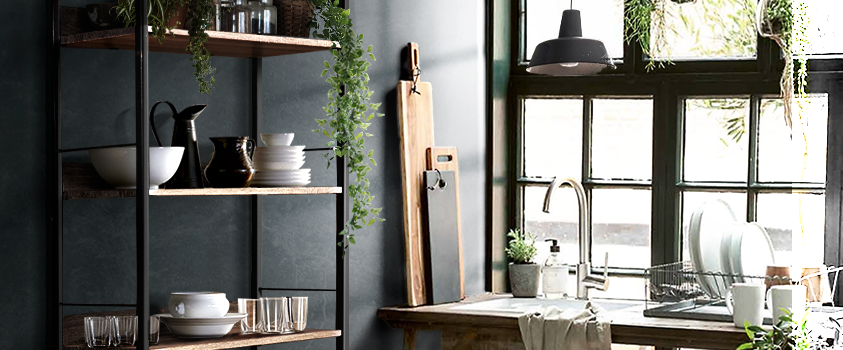
Metal bookshelves will either come as mixed media pieces (usually metal frames with wooden shelves), or they may be completely metal. They are the sturdiest material, with a high weight-bearing capacity and a surface that is easy to clean and maintain. Metal suits an industrial, contemporary or modern home, but without the matching decor it can give off a cold, minimal, lifeless feeling. It is heavy and, depending on the type of metal used, can also become quite expensive, but the long-lasting features make it a good investment.
Pros:
-
High load-bearing capacity.
-
Resistant to fire, with some varieties also resistant to rust and corrosion.
-
Surface scratches can be polished away.
-
Can be used indoors and outdoors.
-
Long-lasting.
Cons:
-
Heavy.
-
Expensive.
-
Can seem cold or lifeless.
-
Some metals are less resistant than others.
Plastic
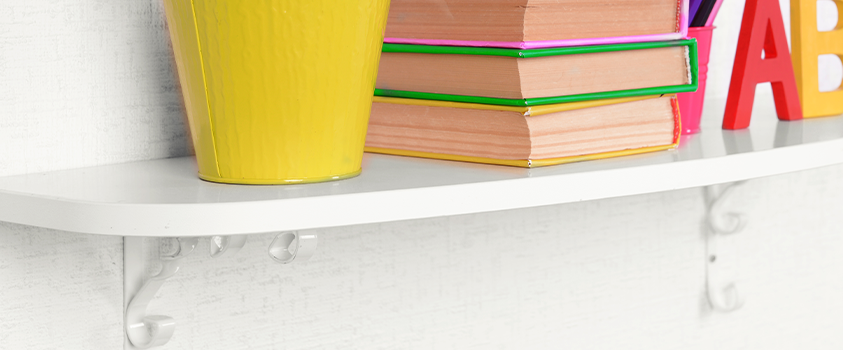
Plastic is one of the most versatile substances you can find. It’s resistant to water, UV light, corrosion, stains, wear and tear - just about anything. There are so many styles, colours and shapes available, that you’re guaranteed to find the perfect piece for your home at an affordable price. Unfortunately, it’s not as durable as other materials, and it is generally not eco-friendly, though some types of plastic furniture are recyclable and/or are made from recycled plastic. Plastic can fit into any decor, but it especially fits retro, mid-century modern, abstract, and other interior styles that value unique shapes, bold colours and clean lines.
Pros:
-
Lightweight.
-
Affordable.
-
Lots of variety.
-
Resistant to water, UV light, corrosion, stains, and general wear and tear.
-
Some pieces can be recycled or made from recycled materials.
Cons:
-
Prone to bending out of shape with age.
-
Cannot support heavy weight.
-
Not environmentally friendly.
Glass
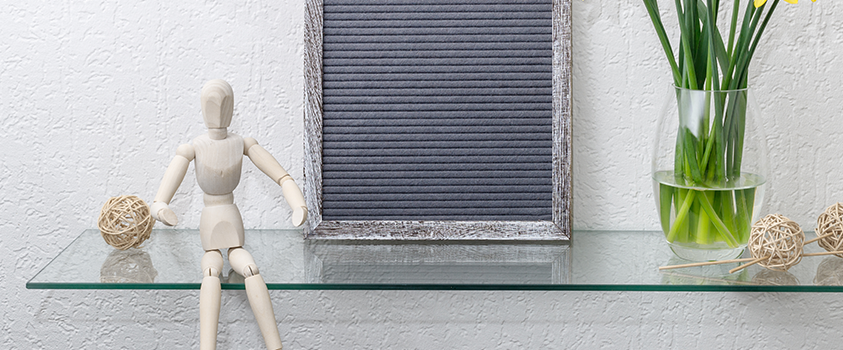
Glass is a stylish material to use for shelving - in fact, it’s very popular to use for display cases, as it allows decorative pieces to really shine, especially with creative lighting. Glass blends in well with most decor, and gives the illusion of more space thanks to its transparency. Glass is also delicate and becomes a hazard when broken, so may not be suitable for homes with children or rambunctious pets. If you want glass but are nervous about its delicacy, you can also use tempered glass. Tempered glass has a higher weight-bearing capacity and also breaks into small rounded pieces as opposed to sharp shards, making it a safer alternative in case of breakage. Either form of glass can be expensive but may be worth it for the avid collector.
Pros:
-
Helps rooms feel larger.
-
Great for displaying decorative pieces.
-
Fits with most decor.
-
Tempered glass has a high weight capacity and is more resistant.
Cons:
-
Delicate.
-
Expensive.
-
Can be a hazard if broken.
-
Hard to fix.
Other uses for bookshelves
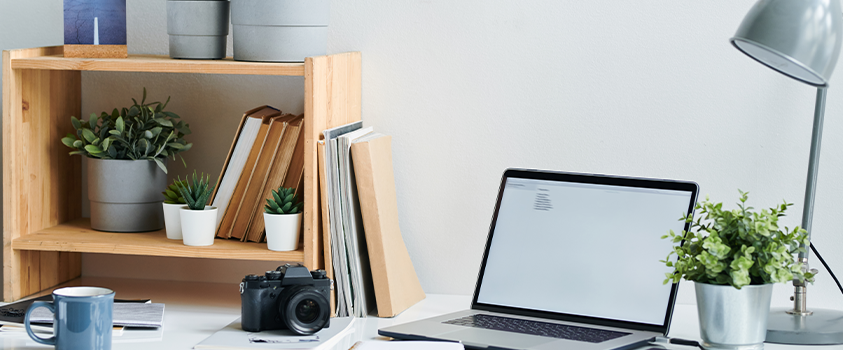
The first thing to figure out is what you plan to use the bookcase for. Of course, the obvious answer is books, but bookshelves can really be used for anything from antiques to collectables. What you want to display may determine what sort of shelving you need.
Books should be stored on a well-ventilated shelf, and they should be displayed either upright or horizontal depending on the size. Rust-proof metal shelving or wood shelving made from low-acidic wood is ideal. Don’t pack your bookcase too tightly - it puts pressure on the books and may cause damage. If you’re displaying plants next to other collectables (especially books), use cachepots (pots without drainage holes) and/or plants that don’t require as much moisture, like succulents. You will also have to be more vigilant regarding pests, as many pests that love plants will also love paper!
Do you have trouble making your collection pop? Use interesting shelving to draw attention and create interest around your key pieces using easels, frames, mounts, pedestals and other display platforms. It's all in the details. Not only will this help your most aesthetic books stand out as cover art, but it will also create easier access to your favourite pieces.
If you're feeling inspired, or want to make your bookshelf multi-purpose, there are a couple of easy ways to achieve a different look. If you collect figurines, ornaments or statuettes, you may like to style these alongside your books. In this case, you will want to choose shelving that allows for a clear 360° view. Glass is a common choice, but you can also use open shelves, glass with a wooden frame, or floating shelves. Clear doors will also help prevent dust. You may even opt for in-built lighting to truly highlight your collection at every angle. If you have precious collectables, you may consider a lockable cabinet to keeps them out of the way from curious hands and paws.
Our top 10 bookshelf organisation tips
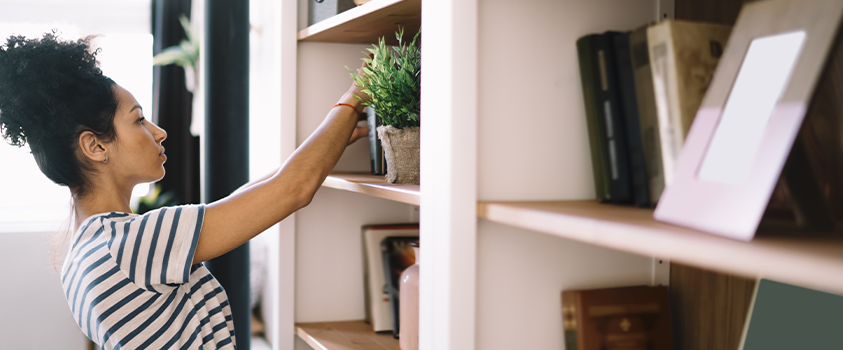
Once you have your bookshelf sorted, you're going to have to figure out how to sort your collection. Here are some top organisation ideas from the book lovers at Artiss.
-
Organise by colour and size
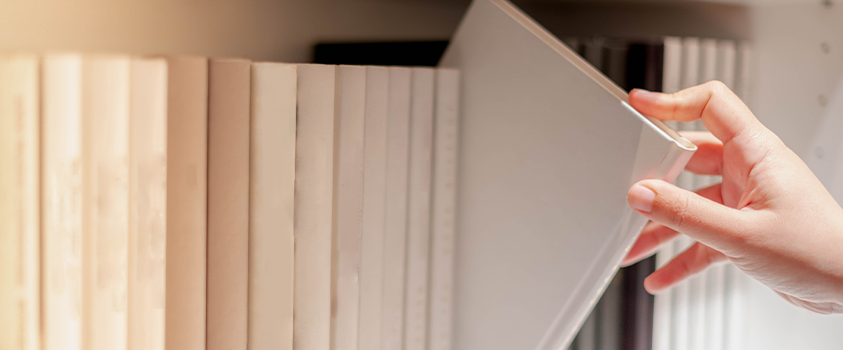
The most Instagrammable aesthetic, sorting your collection into a rainbow is an easy way to brighten a room and wow your guests. Alternatively, organise by size, arranging in groups from small to tall, tall to small, or rolling curves – use the size and shape of your items to your unique advantage!
-
Sort autobiographically
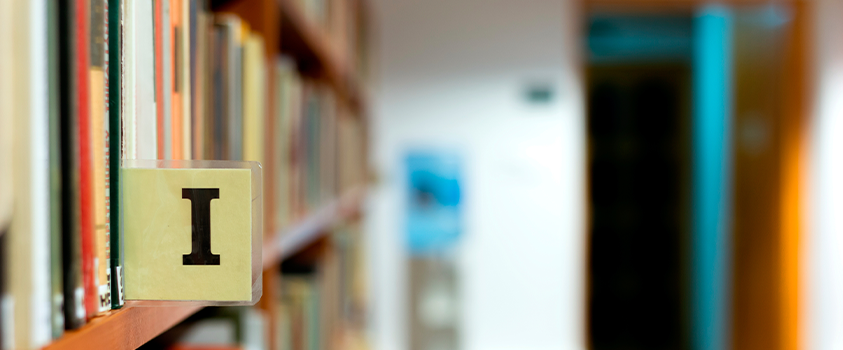
If you prefer to organise your book shelf in a more personal way, consider arranging your collection autobiographically. Organise by the year you bought the book or item, or by how they make you feel, or by who gave them to you. Whichever method you choose will be unique to you and the story of your life.
-
Separate the ‘want-to-read’ section
If you have a collection of books you haven’t read yet but want to read, simply give them their own section either on your main book shelf or in an entirely different room of the house.
-
Break it up
Break up the monotony by adding a pop of colour, a pot plant, or a different-sized object. Don’t just pack everything in one place, but spread your selection throughout your book collection. This falls in line with drawing contrast and creating emphasis, which according to the experts at Artiss, is a key component of interior design.
-
Use baskets for items requiring easy access
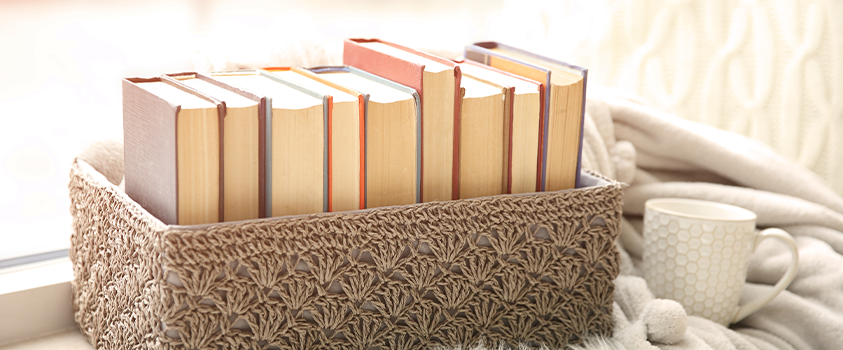
If you find yourself using a handful of items more often than others, keep them in a separate decorative bucket or basket that you can move easily.
-
Turn the pages outward
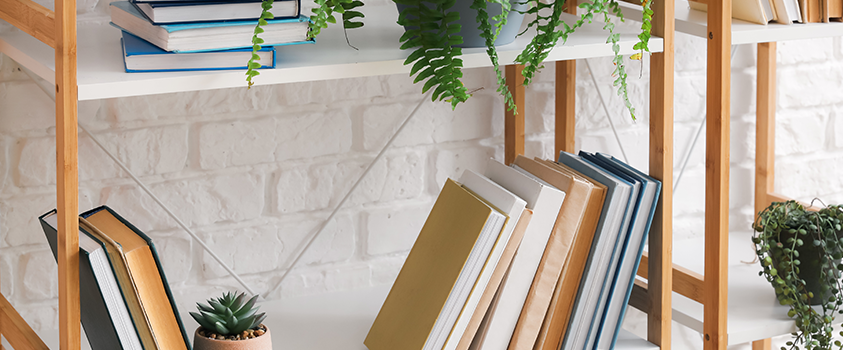
A controversial method, this means turning your books so the spines face the back of the shelf and the pages face outward. It keeps things uniform and aesthetically pleasing, but just remember, it will make it difficult to find the titles you want unless you are deeply familiar with your titles.
-
Use personalised dust jackets

While these usually come in custom sets, you can also design and create your own dust jackets to add a unique touch to your collection. Going back to our first tip, you may prefer to create dustjackets in the same colour scheme or material to create a sense of harmony.
-
Use the rule of thirds
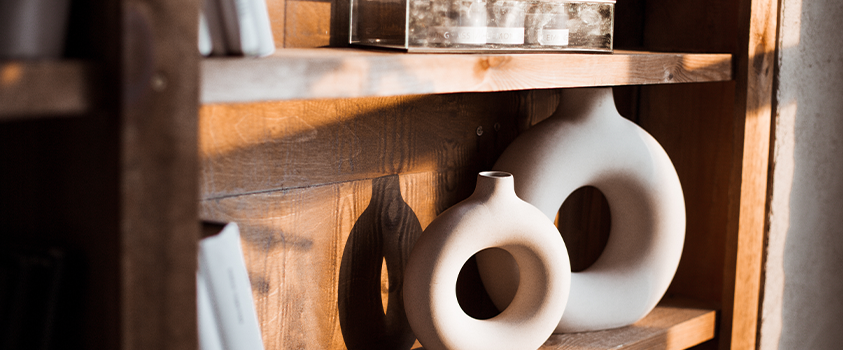
A guideline commonly quoted by photographers, the rule of thirds proposes an image should be split by two equally spaced horizontal and vertical lines, and important elements in the image should be placed along these lines. You might apply this to your shelves by filling a shelf by two-thirds and leaving one-third empty.
Organise your home with Artiss

Artiss’ collection of modern book and media shelves are perfect for displaying your valuable collections. We're one of Australia's top furniture brands across a range of marketplaces for good reason. Shop our range of products online today and enjoy prompt customer service, hassle-free shipping and Australia-wide delivery.








